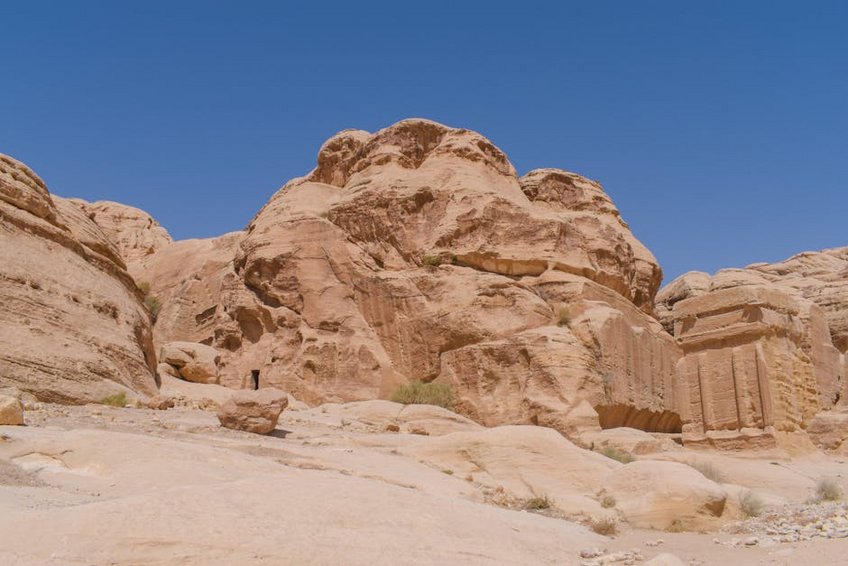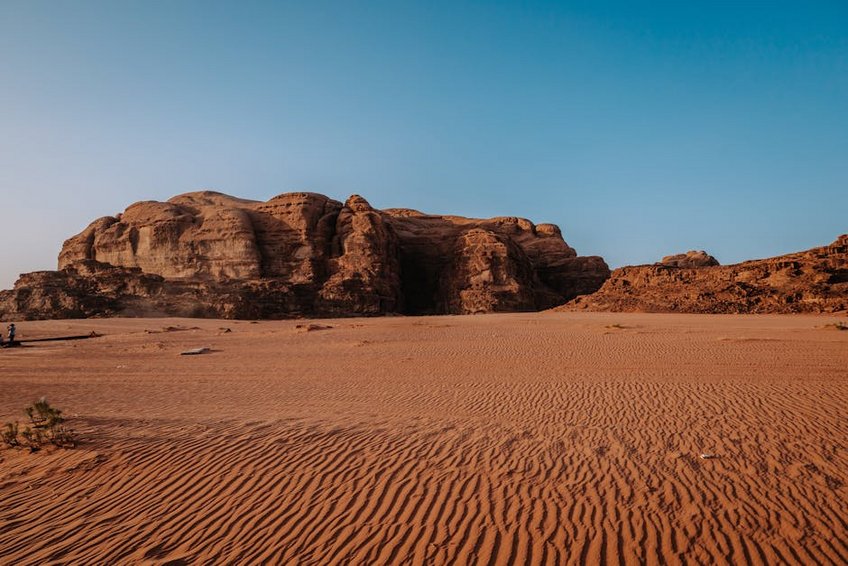Jordan Wadi Rum Desert Camp: Your Ultimate Desert Adventure Guide
Imagine waking up to the gentle glow of sunrise over vast, rust-colored sands, with the silence of the desert broken only by the whisper of the wind—this is the magic of a Jordan Wadi Rum Desert Camp experience. Nestled in Jordan’s stunning Wadi Rum Protected Area, this UNESCO World Heritage site offers an unforgettable escape into one of the world’s most dramatic landscapes. You’ll sleep under a blanket of stars in traditional Bedouin-style camps, explore ancient rock formations, and immerse yourself in rich local culture. Whether you’re seeking adventure through camel treks and jeep tours or simply yearning for peace in nature’s embrace, this destination delivers it all. From the moment you arrive, you’ll understand why filmmakers chose this location for epic scenes in movies like Lawrence of Arabia and The Martian. Planning your Jordan Wadi Rum Desert Camp trip might seem daunting, but with this comprehensive guide, you’ll have everything you need to make it seamless and memorable. Let’s dive into the essentials that will help you craft the desert journey of a lifetime.
Jordan Wadi Rum Desert Camp Essential Information – What Every Traveler Should Know
Before you pack your bags, it’s crucial to understand the basics of the Jordan Wadi Rum Desert Camp experience. Wadi Rum, often called the Valley of the Moon, spans over 720 square kilometers in southern Jordan and is renowned for its breathtaking sandstone mountains, narrow canyons, and vast red dunes. The desert camps here range from basic Bedouin setups to luxurious glamping options, all designed to give you an authentic taste of nomadic life. You’ll find that most camps are eco-friendly, emphasizing sustainability to preserve this fragile environment. The Bedouin people, who have inhabited this region for centuries, are incredibly hospitable, often sharing stories and tea around campfires. Since Wadi Rum is a protected area, entry requires a fee, which contributes to conservation efforts. The climate is typically arid, with hot days and cool nights, so packing layers is essential. This destination isn’t just about accommodation; it’s a cultural immersion that connects you with Jordan’s heritage and natural wonders. Understanding these fundamentals will help you appreciate the depth of your Jordan Wadi Rum Desert Camp adventure and prepare adequately for the journey ahead.
History and Significance of Wadi Rum
- Wadi Rum has been inhabited since prehistoric times, with rock carvings and inscriptions dating back over 12,000 years, offering glimpses into ancient civilizations.
- The area gained fame through T.E. Lawrence’s exploits during the Arab Revolt, and today, it symbolizes Jordan’s cultural resilience and natural beauty.
- Designated a UNESCO World Heritage site in 2011, Wadi Rum is protected for its unique geological formations and cultural heritage, ensuring future generations can enjoy it.
- Budget option: Basic Bedouin camps cost $30-$50 per night, including simple meals like grilled meats and flatbreads; add $20-$40 for shared jeep tours to keep expenses low.
- Mid-range option: Comfortable tents with private bathrooms and added amenities run $80-$150 nightly, often including guided activities like camel treks and sunset viewings.
- Luxury option: High-end glamping with king-sized beds, en-suite facilities, and gourmet dining can cost $200-$400 per night, offering exclusive experiences like private stargazing sessions.
- Jordan Tourism Board Official Site
- Lonely Planet Wadi Rum Guide
Key Geographical Features
Wadi Rum’s landscape is dominated by dramatic rock formations like Jebel Um Ishrin and towering arches such as Burdah Rock Bridge, which you can hike with local guides. The desert floor varies from soft, red sand dunes to hard-packed gravel, perfect for jeep tours or camel rides. Seasonal rains create temporary pools that support rare flora and fauna, including desert foxes and ibex. Elevations range from 800 to 1,800 meters, providing stunning viewpoints for photography, especially at sunrise and sunset. This diverse terrain makes the Jordan Wadi Rum Desert Camp a hub for outdoor activities, from rock climbing to stargazing, ensuring there’s something for every type of traveler to enjoy.

Jordan Wadi Rum Desert Camp Planning Your Trip – Timing, Budget, and Preparation
Planning your visit to a Jordan Wadi Rum Desert Camp involves considering the best seasons, budgeting for various expenses, and preparing for the desert environment. The ideal time to visit is during the spring (March to May) or autumn (September to November) when temperatures are mild, ranging from 20°C to 30°C (68°F to 86°F), making outdoor activities comfortable. Summer months (June to August) can be extremely hot, often exceeding 40°C (104°F), while winters (December to February) bring chilly nights, sometimes dropping below freezing, so pack accordingly. Your budget will depend on your travel style; budget travelers can find basic camps for around $30-$50 per night, while mid-range options cost $80-$150, and luxury glamping can reach $200-$400 nightly, including meals and tours. Don’t forget to factor in additional costs like entrance fees (approximately $10-$15 per person), guided tours, and transportation. Preparation is key: bring sturdy footwear, sun protection, and a reusable water bottle to stay hydrated. Also, check visa requirements; most Western passport holders can obtain a visa on arrival or through the Jordan Pass, which includes entry to multiple attractions. By planning ahead, you’ll ensure a smooth and enjoyable Jordan Wadi Rum Desert Camp experience that fits your preferences and budget.
Best Time to Visit Jordan Wadi Rum Desert Camp
For the most pleasant weather, aim for spring or autumn when daytime temperatures are ideal for exploring, and nights are cool but not freezing. Spring brings wildflowers blooming across the desert, adding a splash of color to the red sands, while autumn offers clear skies perfect for stargazing. Summer visits are possible if you can handle the heat, but plan activities for early morning or late afternoon to avoid the midday sun. Winter provides a unique, serene experience with fewer tourists, though you’ll need warm layers for cold nights. Regardless of season, always check local forecasts, as sudden sandstorms can occur, potentially disrupting travel plans. This seasonal flexibility means you can tailor your Jordan Wadi Rum Desert Camp trip to your comfort level and interests.
Budget Planning and Costs for Your Desert Adventure
Essential Preparation Checklist for Desert Camping
Start by packing light, breathable clothing for daytime and warm layers for evenings, as temperatures fluctuate dramatically in the desert. Essential items include a wide-brimmed hat, sunglasses, and high-SPF sunscreen to protect against intense sun exposure. Sturdy, closed-toe shoes are a must for hiking on rocky terrain, and a headlamp will help you navigate camp after dark. Bring a reusable water bottle to minimize plastic waste and stay hydrated; many camps provide refill stations. Don’t forget your camera to capture the stunning landscapes, and consider a power bank for charging devices, as electricity may be limited. Finally, familiarize yourself with local customs, such as dressing modestly and respecting Bedouin traditions, to ensure a respectful and enriching Jordan Wadi Rum Desert Camp stay.
Jordan Wadi Rum Desert Camp Top Attractions and Activities – Must-Do Experiences
Your days at a Jordan Wadi Rum Desert Camp will be filled with awe-inspiring activities that showcase the desert’s natural and cultural highlights. Jeep tours are a popular choice, taking you deep into the valley to see iconic sites like the Seven Pillars of Wisdom rock formation and Lawrence’s Spring, where you can learn about the area’s history. For a more traditional experience, camel treks allow you to traverse the sands at a leisurely pace, echoing the journeys of ancient Bedouin traders. Adventure seekers will love rock climbing on Jebel Rum or hiking through narrow siqs (canyons) like Khazali Canyon, adorned with ancient inscriptions. As evening falls, don’t miss the sunset from a high vantage point, where the sky transforms into a canvas of oranges and purples. After dark, stargazing becomes a magical activity, with minimal light pollution revealing a brilliant Milky Way. Many camps also offer cultural performances, such as Bedouin music and storytelling around a fire, giving you insight into local life. These diverse attractions ensure that your Jordan Wadi Rum Desert Camp adventure is packed with moments you’ll cherish forever.
Must-See Highlights in Wadi Rum
Begin with a visit to the Burdah Rock Bridge, one of the world’s largest natural arches, which requires a guided hike but rewards you with panoramic views. The Red Sand Dunes are perfect for sandboarding or simply sliding down the soft slopes, offering fun for all ages. Lawrence’s Spring, named after T.E. Lawrence, provides a historical touchpoint with its freshwater source and surrounding petroglyphs. For movie buffs, the filming locations of blockbusters like The Martian add a cinematic element to your exploration. Each of these spots is easily accessible from most Jordan Wadi Rum Desert Camps, and local guides can enrich your visit with stories and context, making the desert’s wonders come alive in a personal way.
Hidden Gems and Local Favorites
Venture off the beaten path to discover lesser-known treasures like the Anfashieh Inscriptions, where ancient Nabataean carvings tell stories of past civilizations. The White Desert area offers a stark contrast to the red sands, with its pale rock formations creating a surreal landscape perfect for photography. For a unique cultural experience, join a Bedouin family for a traditional meal in their tent, where you’ll taste authentic dishes like mansaf (lamb with yogurt sauce) and learn about their daily life. Another local favorite is the silent walks at dawn, allowing you to experience the desert’s tranquility without the crowds. These hidden gems provide a deeper connection to Wadi Rum, making your Jordan Wadi Rum Desert Camp stay even more memorable and authentic.
Jordan Wadi Rum Desert Camp Practical Travel Information – Logistics and Accommodation
Navigating the logistics of your Jordan Wadi Rum Desert Camp trip is straightforward with a bit of advance planning. Most travelers fly into Amman’s Queen Alia International Airport, then take a 4-hour drive south to Wadi Rum Village, where camps are based. Renting a car gives you flexibility, but shared taxis and buses are affordable options; once in Wadi Rum, 4×4 vehicles are essential for desert travel, often arranged by your camp. Accommodation ranges from basic Bedouin tents to luxury eco-camps, all offering a unique blend of comfort and authenticity. Meals are typically included, featuring Jordanian specialties like grilled meats, hummus, and sweet tea. It’s wise to book camps and tours in advance, especially during peak seasons, to secure your preferred dates. Communication is easy, as many camp staff speak English, and mobile coverage is decent in most areas. Below is a table summarizing key accommodation options to help you choose the right fit for your Jordan Wadi Rum Desert Camp experience.
| Category | Options/Features | Price Range (USD) |
|---|---|---|
| Basic Camp | Shared tents, communal bathrooms, simple meals, guided activities | $30-$50 per night |
| Mid-Range Camp | Private tents with beds, en-suite facilities, included tours, cultural events | $80-$150 per night |
| Luxury Glamping | Spacious tents with heating/AC, gourmet dining, private guides, stargazing setups | $200-$400 per night |


